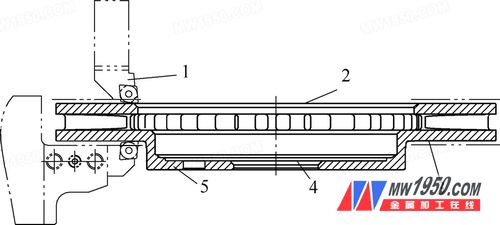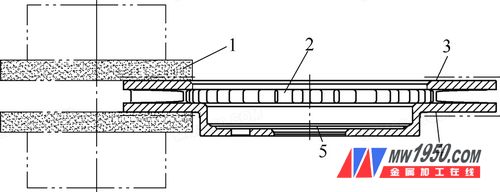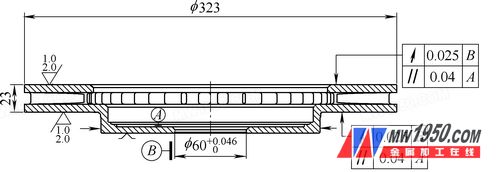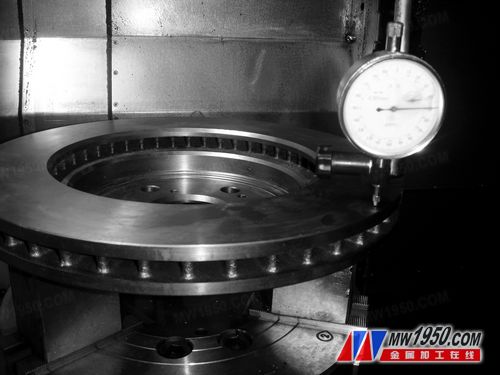The brake disc of the car is a precision part in the brake parts, and the dimensional accuracy is high. In particular, the circumferential thickness difference between the two brake surfaces is usually required to be 0.009 mm, the parallelism is 0.04 mm, and the runout requirement is 0.025 mm. These geometric tolerances are guaranteed by finishing. The same use of CNC lathes and the use of double-knife synchronous turning technology to ensure, and some will be based on customer requirements using two braking surfaces simultaneous grinding process. The processing is shown in Figure 1 and Figure 2.

Figure 1 Double-knife synchronous turning

Figure 2 Synchronous grinding
Our company is specialized in the production of automobile brakes, producing various brake assemblies and related parts. We have more than ten years of experience in the production of brake discs. In the past, we used double-end synchronous grinding technology to ensure the brake discs. Geometric tolerances. In 2012, we developed a new brake disc for our customers. The material is HT250+6 kinds of micro-alloys, as shown in Figure 3. During the trial production, the customer canceled the grinding requirements. The above geometrical tolerances must be completed by turning, and the double-knives on our equipment also failed. To this end, we must change our thinking and think about another processing method that is imminent.

Figure 3 brake disc
Analysis
Since the two sides cannot be processed at the same time, is it feasible to machine one surface at a time? First analyze whether the device is feasible. In addition to a set of double-knife devices, the equipment also has an independent turret. The end face of the turret and the two knives are respectively mounted on the two knives. The two braking surfaces are processed separately, so the efficiency will definitely be reduced. This is not important, can the key quality meet the requirements? Secondly, it is necessary to analyze why the two braking surfaces are processed at the same time. In order to ensure the geometrical tolerance and surface roughness value of the brake disc during the finishing process, Ra=1.0~2.0μm, we choose the ceramic blade. The processing parameters are: vc=500m/min, f=0.2mm/r, machining allowance The amount is not more than 0.3mm. For workpieces with thin walls and large diameters, if the braking surface is unsupported, the rigidity will be poor at high speed and the vibration will occur.
If one surface is machined at a time, the tool and the workpiece will resonate, and the machined surface will have a vibrating knife pattern. At this time, the surface roughness and the geometrical tolerance are not met. If the two knives are simultaneously processed, the two knives simultaneously clamp the workpiece, increase the rigidity of the workpiece, the workpiece will not shake, and the knives will not appear, and the two knives have the same path, as long as the accuracy of the device itself is no problem, the shape Tolerances can be effectively controlled and efficiency is improved. The brake disc has a diameter of 323 mm and is a large diameter product with a thickness of 23 mm. It is not a thin-walled part. First verify that the workpiece will deform itself when it is rotating at high speed.

Figure 4 Detecting the rigidity of the brake disc
Outdoor Garden Lights,Pond Lotus Lights,LED Mushroom Lights,Garden Flower Lights,Outdoor Reed Lights
Sichuan Kangruntengpu Photoelectric Technology Co., Ltd. , https://www.tengpulighting.com
![<?echo $_SERVER['SERVER_NAME'];?>](/template/twentyseventeen/skin/images/header.jpg)